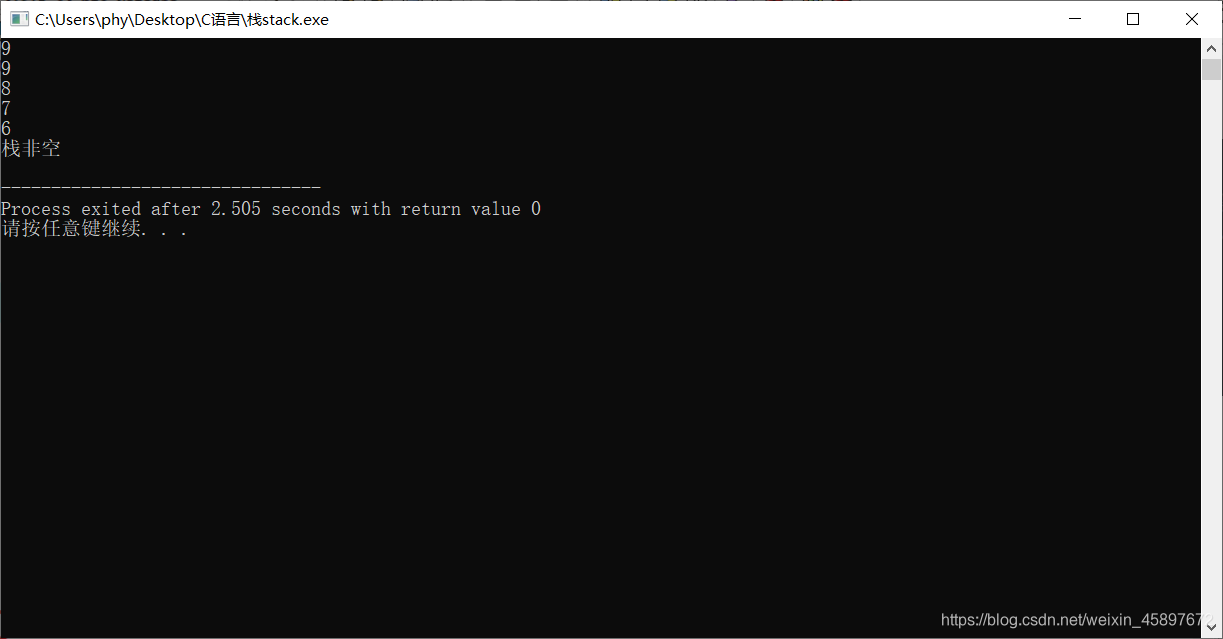头文件:
#include<stack>
定义:
stack<int> s1;
stack<string> s2;
基本操作:
s.push(x); //入栈
s.pop(); //出栈,只是删除栈顶元素,并不返回该元素
s.top(); //访问栈顶元素
s.empty(); //判断栈空,当栈空时,返回true
s.size(); //访问栈中元素个数
整体代码:
#include <stack> //后进先出
#include <cstdio>
using namespace std;
int main()
{
stack<int> s; //声明一个int类型的栈
for(int i = 1; i < 10; i++)
s.push(i); //将 1~9放入栈中
printf("%d\n",s.size()); //输出栈中数据元素的个数
printf("%d\n",s.top()); //访问最顶端的数据
s.pop(); //移除最顶端的数据
printf("%d\n",s.top());
s.pop();
printf("%d\n",s.top());
s.pop();
printf("%d\n",s.size()); //输出栈中数据元素的个数
if(s.empty()) //判断栈是否为空
printf("栈空\n"); //为空
else
printf("栈非空\n"); //非空
return 0;
}
运行结果:

